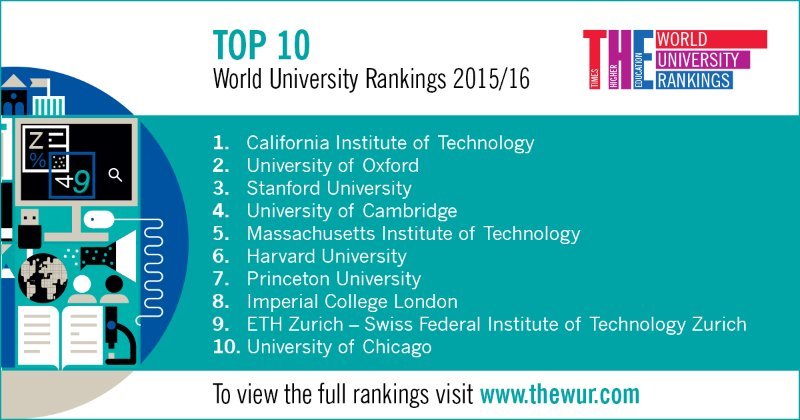BRICS & Emerging Economies Rankings 2016 results out now
This year’s Times Higher Education World University Rankings saw 28 nations make the top 200, with a further 42 making an appearance in the overall list of 800.
Jordan was there. Nigeria too, along with Serbia, Malaysia and of course the BRICS nations: Brazil, Russia, India, China and South Africa.
While the upper echelons are still dominated by the traditional Western powerhouses (the top 25, for example, contains institutions from just four countries: the US, the UK, Canada and Switzerland), many so-called “emerging economies” have recognised the importance of a strong higher education sector, and they are determined to established one.

In Russia, for example, Vladimir Putin has launched an ambitious plan, Project 5-100, that aims to place five Russian universities in the world’s top 100 by 2020. In August, China announced plans to boost the research base of its top nine universities, aiming to get six universities into the leading group of universities globally – again, by 2020.
You could argue that the power shift is already happening. In this year’s rankings, China has 21 universities in the top 600 and 37 in the top 800. Seventeen institutions from Brazil make the list, with the same number from India.
Russia is a standout performer. Although it may have fewer top 800 institutions (13) than Brazil or India, more make the higher ranks (eight break the top 600).
Alexei Khokhlov, vice-rector of Lomonosov Moscow State University – ranked at 161 – says that the country has already made huge strides. “I think that even now the best Russian universities are competitive with the best in the US and the UK,” he says.
Four African countries – Ghana, Kenya, Nigeria and Uganda – are represented in the tables for the first time; five Malaysian institutions make the cut. The rankings are changing.
The success of the BRICS is being celebrated this week in particular, with the publication at 9pm (GMT) of the BRICS and Emerging Economies Ranking results, and our BRICS Universities Summit in Delhi taking place over the next three days, at which the Indian president will be hosting a tea party.
However, challenges remain. India’s top performer, for example, sits in the 251-300 category. Brazil’s number one is in the same category. And although two Chinese institutions make the top 50, no others break the top 200.
The BRICS rankings recognise that some universities in developing countries will not have research systems as mature as those of the developed world, and may not be as well integrated with the primarily English-language global research publishing system. The methodology is tweaked to reflect this.
However, as emerging economies continue to make progress in the overall world rankings, it might only be a matter of time before such considerations are no longer required.
A version of this blog originally appeared on LinkedIn.




